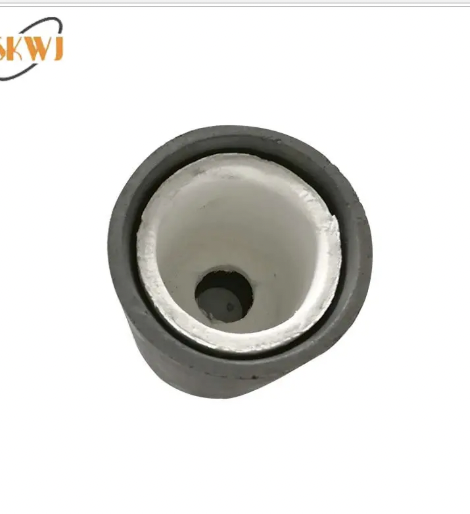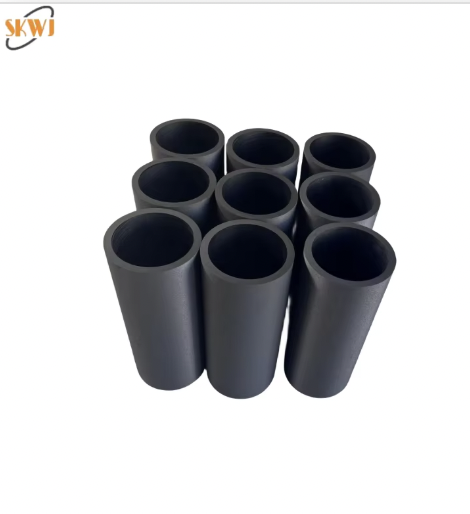Understanding the Versatility of Industrial Graphite Materials
Industrial graphite blocks represent one of the most versatile and essential materials in modern manufacturing and industrial applications. These specialized carbon-based materials combine unique properties of thermal conductivity, electrical conductivity, and chemical resistance, making them indispensable across numerous sectors. The various grades of graphite blocks serve distinct purposes, each engineered to meet specific industrial requirements and performance standards.
The classification of graphite block grades is based on several critical factors, including particle size, density, strength, and purity levels. These characteristics determine their suitability for different applications, from nuclear reactors to semiconductor manufacturing. Understanding these grades is crucial for engineers, manufacturers, and industry professionals to make informed decisions about material selection.

Classification of Industrial Graphite Grades
Isotropic Graphite Grades
Isotropic graphite blocks represent the highest quality grade available in the market. These materials exhibit uniform properties in all directions, making them ideal for applications requiring consistent performance regardless of orientation. The manufacturing process involves using fine-grain particles and specialized binding agents, resulting in a homogeneous structure with superior strength characteristics.
The unique properties of isotropic graphite block grades include exceptional thermal stability, high purity levels (often exceeding 99.9%), and remarkable mechanical strength. These characteristics make them perfect for demanding applications in aerospace, semiconductor manufacturing, and nuclear industries where material reliability is paramount.
Extruded Graphite Grades
Extruded graphite blocks are manufactured through a process that aligns graphite particles in a specific direction, creating anisotropic properties. This grade offers excellent thermal and electrical conductivity along the extrusion axis, making it particularly suitable for applications where directional properties are advantageous.
These grades typically feature larger particle sizes and are more cost-effective than isotropic grades. Common applications include electrodes for electric arc furnaces, continuous casting dies, and heat exchangers where directional thermal conductivity is desired.
Industrial Applications and Performance Characteristics
Metallurgical Processing Applications
In metallurgical processing, graphite block grades play a crucial role in various high-temperature applications. The material's ability to maintain structural integrity at extreme temperatures, coupled with its chemical inertness, makes it ideal for crucibles, molds, and furnace components.
The selection of appropriate graphite block grades for metallurgical applications depends on factors such as operating temperature, chemical exposure, and mechanical stress requirements. Higher-density grades typically offer better resistance to metal penetration and erosion, while coarser grades might be suitable for less demanding applications.
Energy Sector Requirements
The energy sector, particularly nuclear power generation, demands specialized graphite block grades that meet stringent safety and performance standards. Nuclear-grade graphite must exhibit exceptional purity, dimensional stability, and resistance to radiation damage.
Renewable energy applications also utilize specific graphite block grades, especially in solar power production and energy storage systems. The material's thermal management capabilities and electrical conductivity properties make it valuable for these emerging technologies.
Manufacturing Processes and Quality Control
Production Methods
The manufacturing of graphite block grades involves several sophisticated processes, including mixing, forming, baking, and graphitization. Each step must be carefully controlled to achieve the desired material properties. The initial selection of raw materials, including coke particles and binder systems, significantly influences the final product characteristics.
Modern production facilities employ advanced technologies to ensure consistent quality and properties across batches. Computer-controlled processes and real-time monitoring systems help maintain precise control over critical parameters such as temperature profiles and pressure during manufacturing.
Quality Assurance Standards
Rigorous quality control measures are essential in the production of graphite block grades. This includes comprehensive testing of physical properties, chemical composition, and structural integrity. Manufacturers must comply with international standards and industry-specific requirements to ensure their products meet or exceed customer specifications.
Regular testing procedures include density measurements, strength testing, thermal conductivity analysis, and microscopic examination of grain structure. These quality assurance processes help maintain consistent product performance and reliability.
Future Trends and Innovations
Advanced Material Development
The field of graphite block grades continues to evolve with ongoing research and development efforts. New manufacturing techniques and material combinations are being explored to enhance performance characteristics and expand application possibilities. Nano-enhanced graphite grades represent one of the most promising areas of development.
Researchers are also investigating methods to improve the sustainability of graphite production processes while maintaining or enhancing material properties. This includes developing eco-friendly binder systems and optimizing energy consumption during manufacturing.
Emerging Applications
As technology advances, new applications for graphite block grades continue to emerge. The growing demand for electric vehicles and energy storage solutions is driving innovation in battery-related applications. Additionally, aerospace and defense sectors are exploring novel uses for specialized graphite grades in advanced propulsion systems and thermal management solutions.
The semiconductor industry's evolution towards smaller and more powerful devices is also creating new requirements for ultra-high-purity graphite block grades with enhanced precision manufacturing capabilities.
Frequently Asked Questions
What factors determine the selection of graphite block grades for specific applications?
The selection of graphite block grades depends on several key factors including operating temperature requirements, mechanical stress levels, chemical exposure conditions, thermal conductivity needs, and cost considerations. Engineers must evaluate these parameters alongside specific industry standards and regulatory requirements to choose the most appropriate grade.
How do different graphite block grades vary in terms of lifespan and maintenance requirements?
The lifespan of graphite blocks varies significantly based on their grade and application. Higher-density, isotropic grades typically offer longer service life and require less maintenance due to their superior resistance to wear and chemical attack. Regular inspection and proper handling procedures can help maximize the operational life of all graphite grades.
What are the environmental considerations in graphite block production and usage?
Environmental considerations include energy consumption during manufacturing, raw material sourcing sustainability, and end-of-life disposal or recycling options. Modern production facilities implement various measures to reduce environmental impact, including energy-efficient processes and waste reduction strategies. Many manufacturers also offer recycling programs for used graphite materials.






